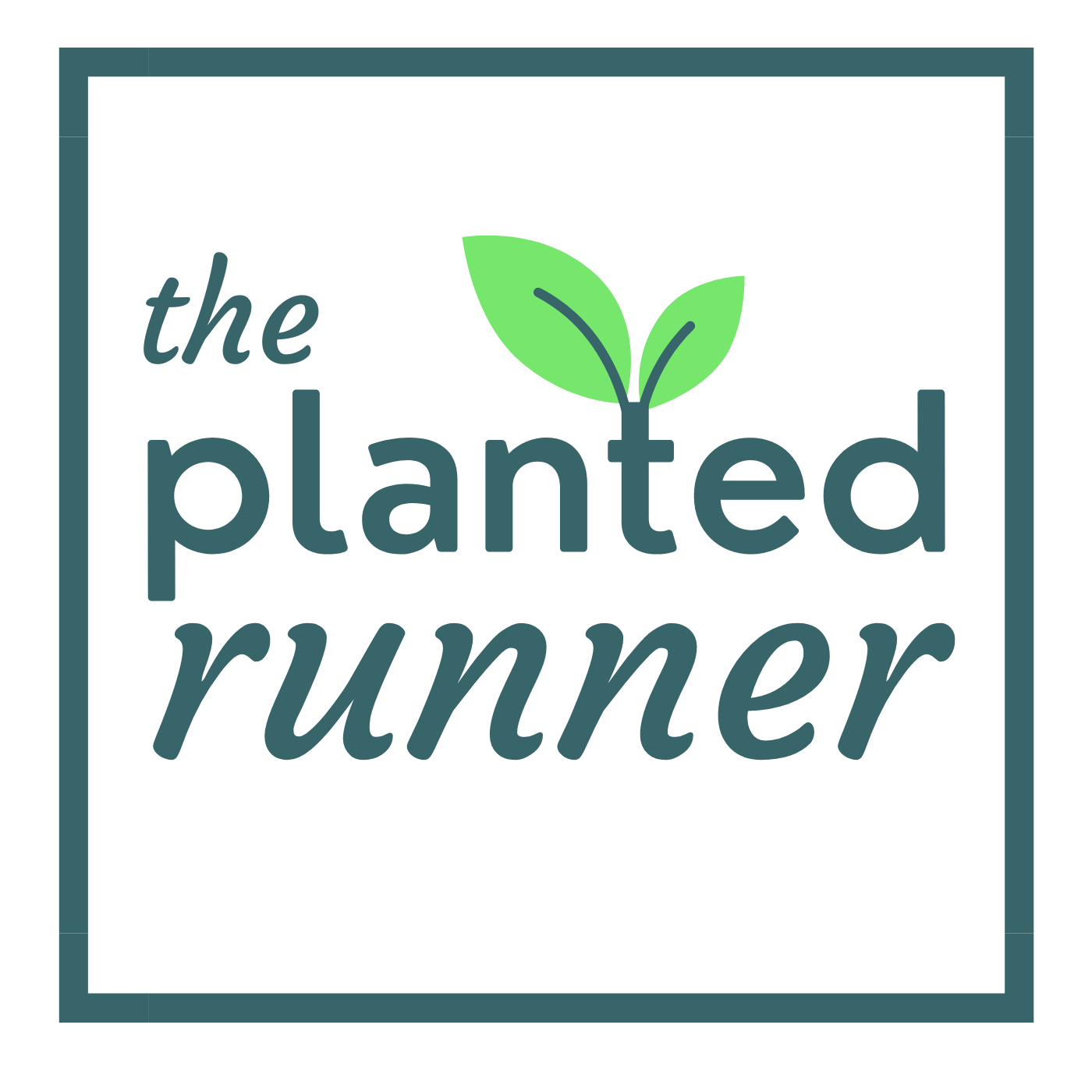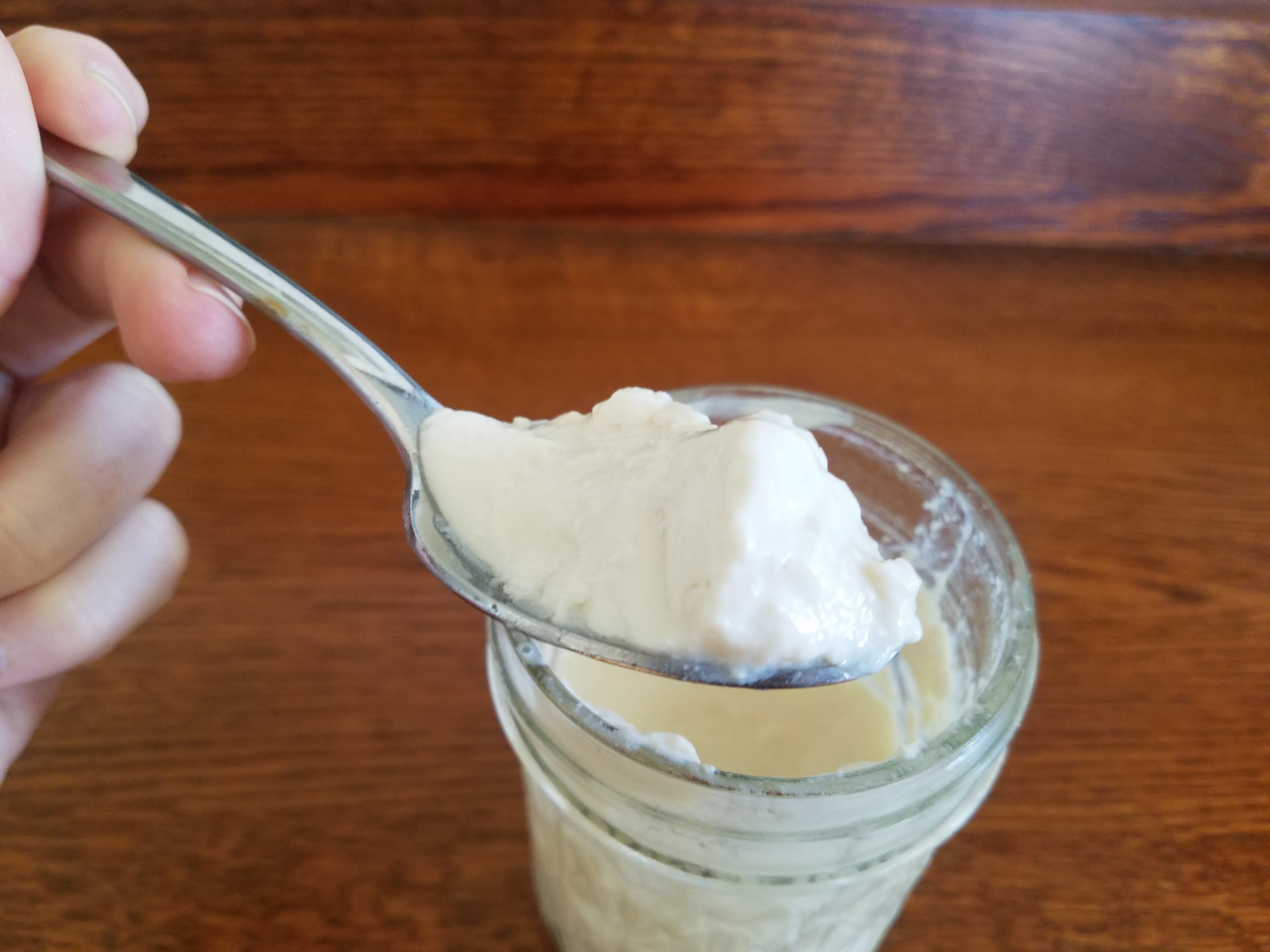People must really like yogurt.
Strolling past the dairy section of any grocery store, you’ll see row after row of different kinds of yogurt. Greek, fat free, almond, coconut, soy, “lite”, fruit flavored, plain…it’s seemingly endless.
I’m glad that the non-dairy yogurt selection is getting better lately, but if you flip over to the ingredients list, the majority of yogurts (both dairy and non-dairy) are full of sugar and additives.
Might as well buy ice cream instead!
Even if you are lucky enough to find plain soy yogurt, it’s typically thickened with gels and gums and will set you back at least $6 a pint.
All I want is thick, protein-rich, non-dairy yogurt teeming with healthy active cultures that will make my gut happy.
Is that so hard?
Actually, no it’s not. It’s stupidly easy.
You can make yogurt at home in with about 10 minutes of active time without any special equipment other than a thermometer. Four hours later and your fridge is stocked for the week for pennies.
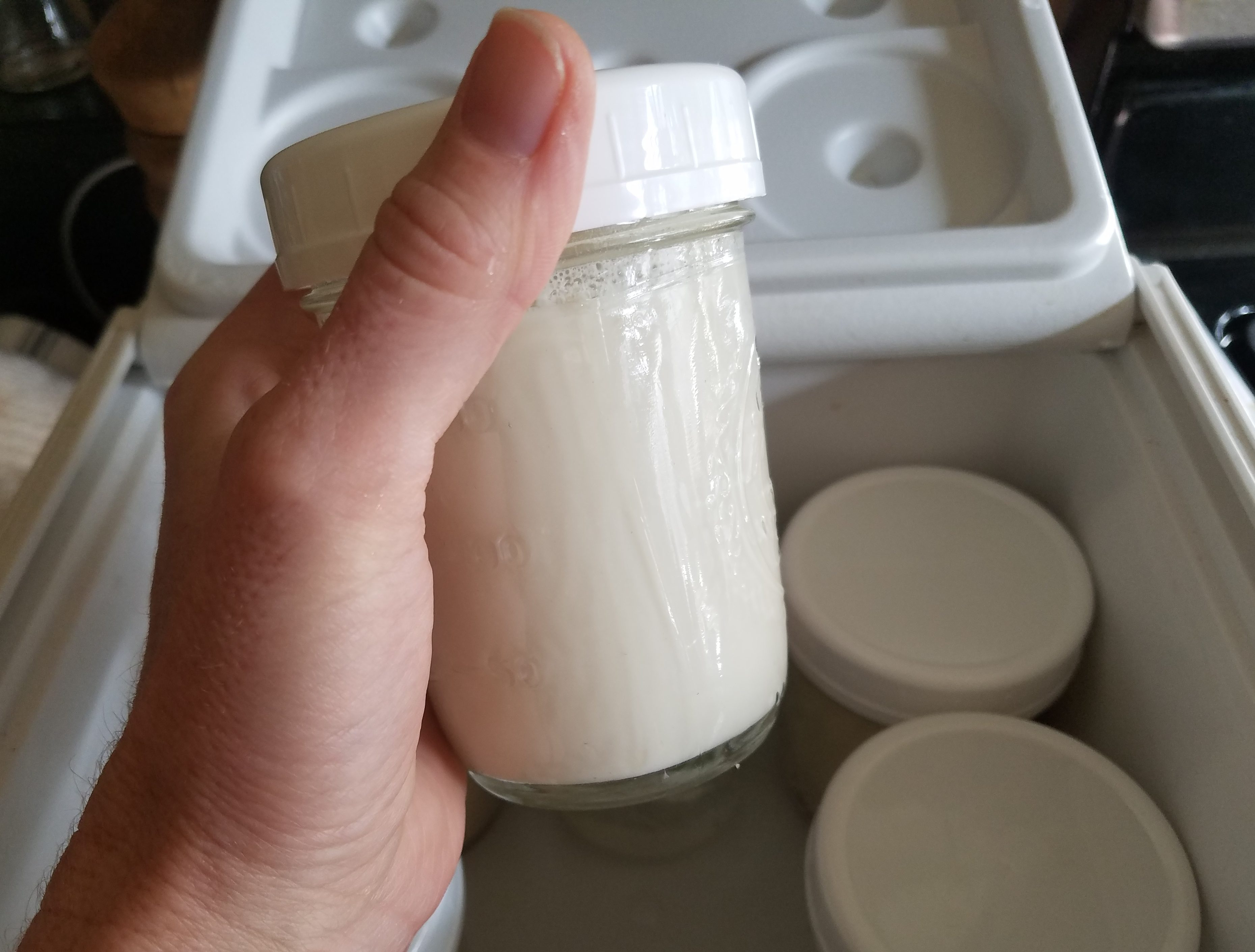
All it takes is the milk of your choice and some pro-biotic bacteria.
Yogurt made from almond, rice, or cashew milk is delicious, but it will not be super thick or have much protein if that’s what you are after. Without adding a thickener like cornstarch, you will get more of a kefir-like drink, perfect for adding to smoothies for a tangy kick.
Coconut milk yogurt can easily be made to be as thick as Greek yogurt, but it still lacks the protein and has a much higher fat content if you use canned coconut milk.
I typically make soy milk because it’s the only type of non-dairy milk that has a decent amount of protein. To stay away from gels and gums and whatever else they put in it refrigerated soy milk, I choose the shelf-stable soy milk that contains nothing but water and organic soybeans (EdenSoy is a good example).
But after a while, using carton after carton of soy milk felt wasteful to me. That’s when I discovered you can buy powdered organic soy milk! Less packaging and a better value. Perfect!
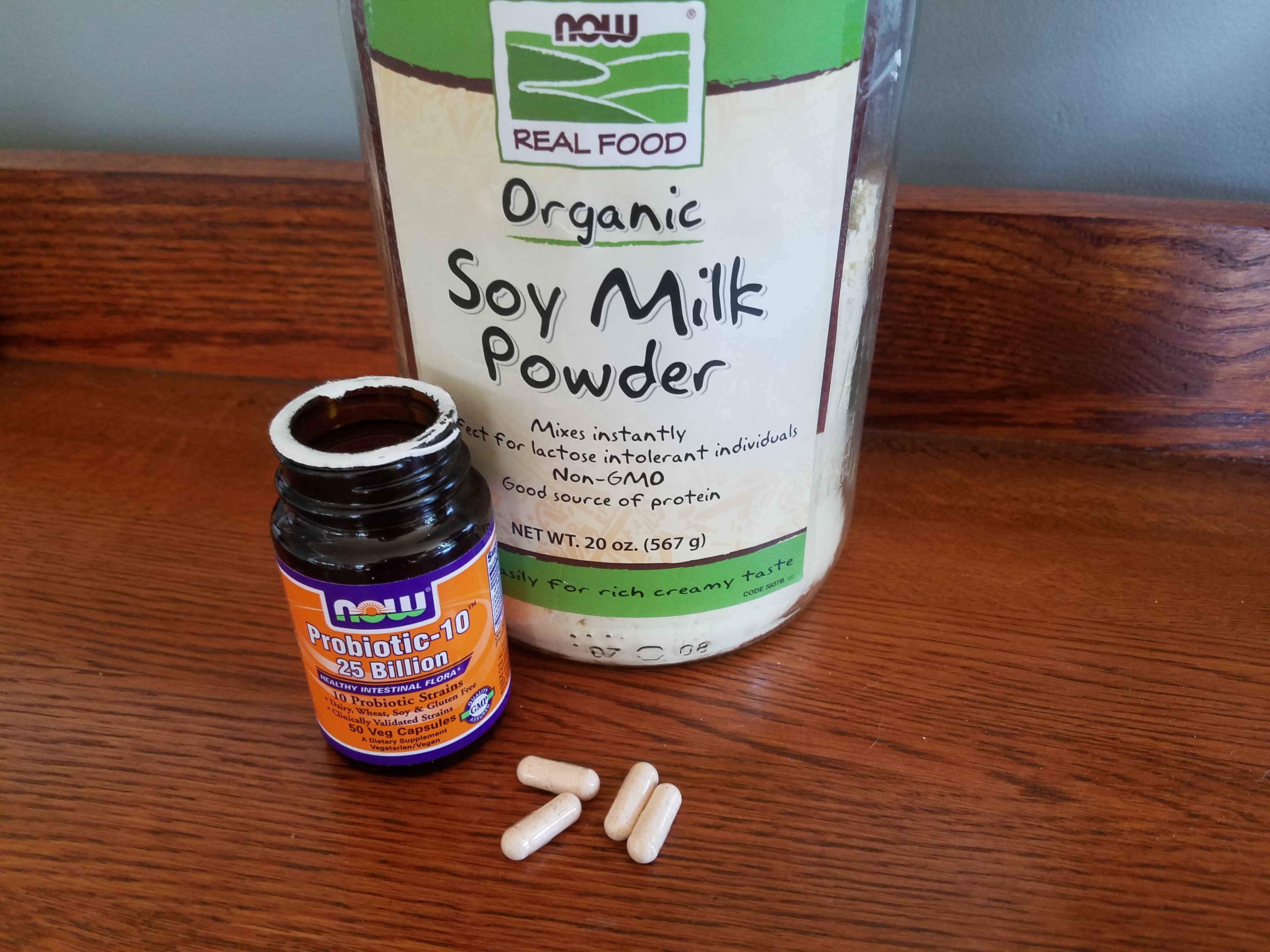
The only trick to using powdered is that you need to make sure that you bring the water and powder to boiling to make sure that the powder is fully dissolved. This keeps it from separating while it’s fermenting.
So how do I make yogurt without a yogurt maker? I use a cooler! I happen to have a lunch-sized insulated cooler that was designed to hold a six-pack of beer and not much else. It fits six one-cup mason jars perfectly and allows me to make 5 cups of yogurt at a time.
Why not six?
Because one of those spots is reserved for a mason jar filled with boiling water which keeps the inside of the cooler at the perfect temperature.
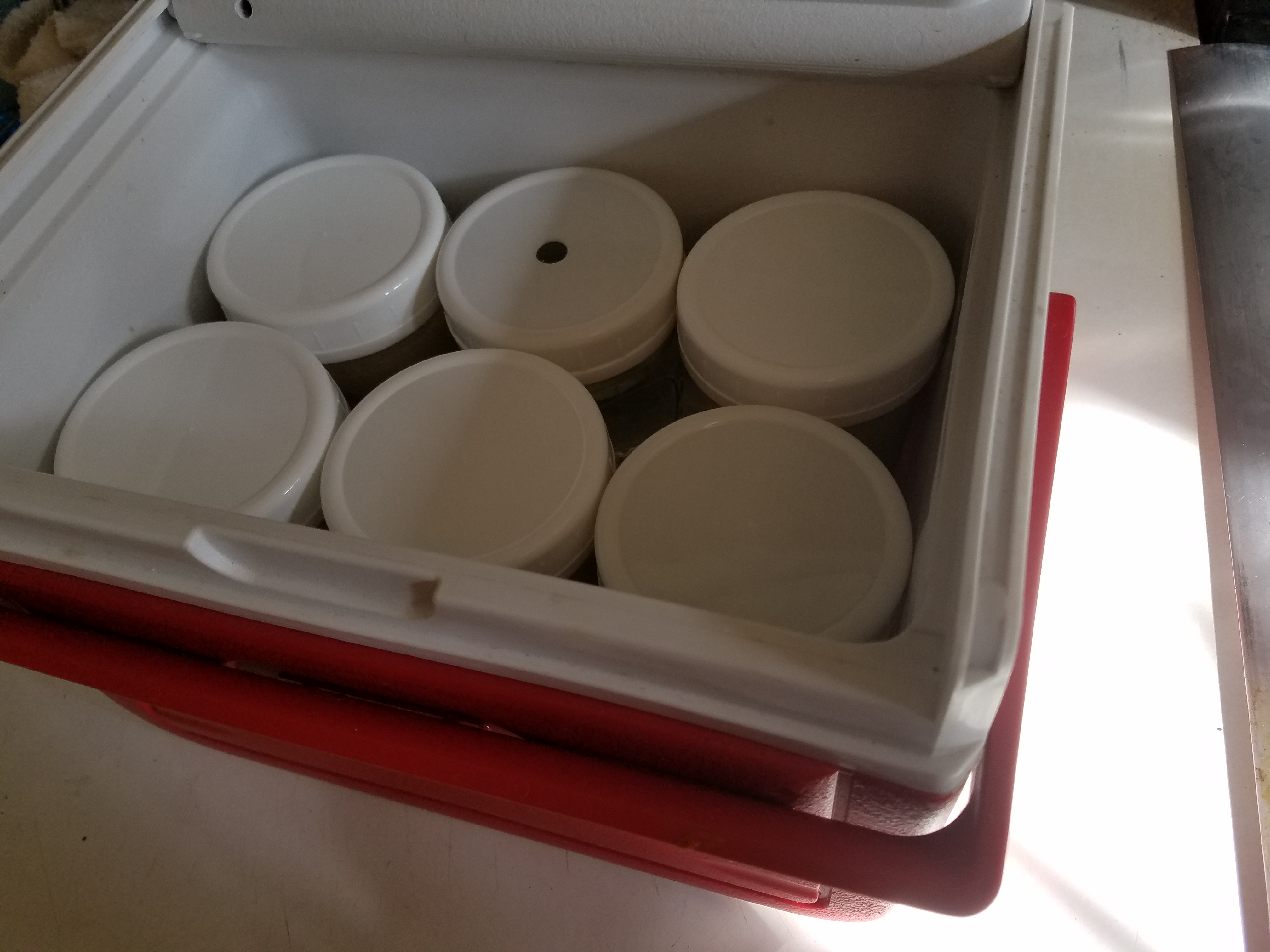
Low tech yogurt maker with nothing extra to buy or plug in!
The cheapskate minimalist in me practically sings with joy at this discovery.
So where does the yogurt bacteria come from? You can get it one of two ways: buy some yogurt of your choice and mix a couple tablespoons into your warm milk or use pro-biotic capsules.
I prefer to use the capsules because I get more consistent results, but I also like to add in a tablespoon of the last batch I’ve made, just to be sure it works. Choose a brand that contains at least 50 billion active cultures for best results. I use this brand.
So here’s how you do it in a nutshell: bring 4 cups of milk just to boiling, let it cool to 110 degrees F, mix in your pro-biotic, pour into your clean containers, put into your cooler along with a jar of boiling water, and around four hours later, you have yogurt!
So simple.
You can even leave it overnight and wake up to fresh, tangy yogurt for breakfast. Four hours is about the minimum and if you leave it for 12, it will be noticeably tangier.
Tangy, unflavored soy yogurt tastes very similar to dairy sour cream so that’s another great use for it.
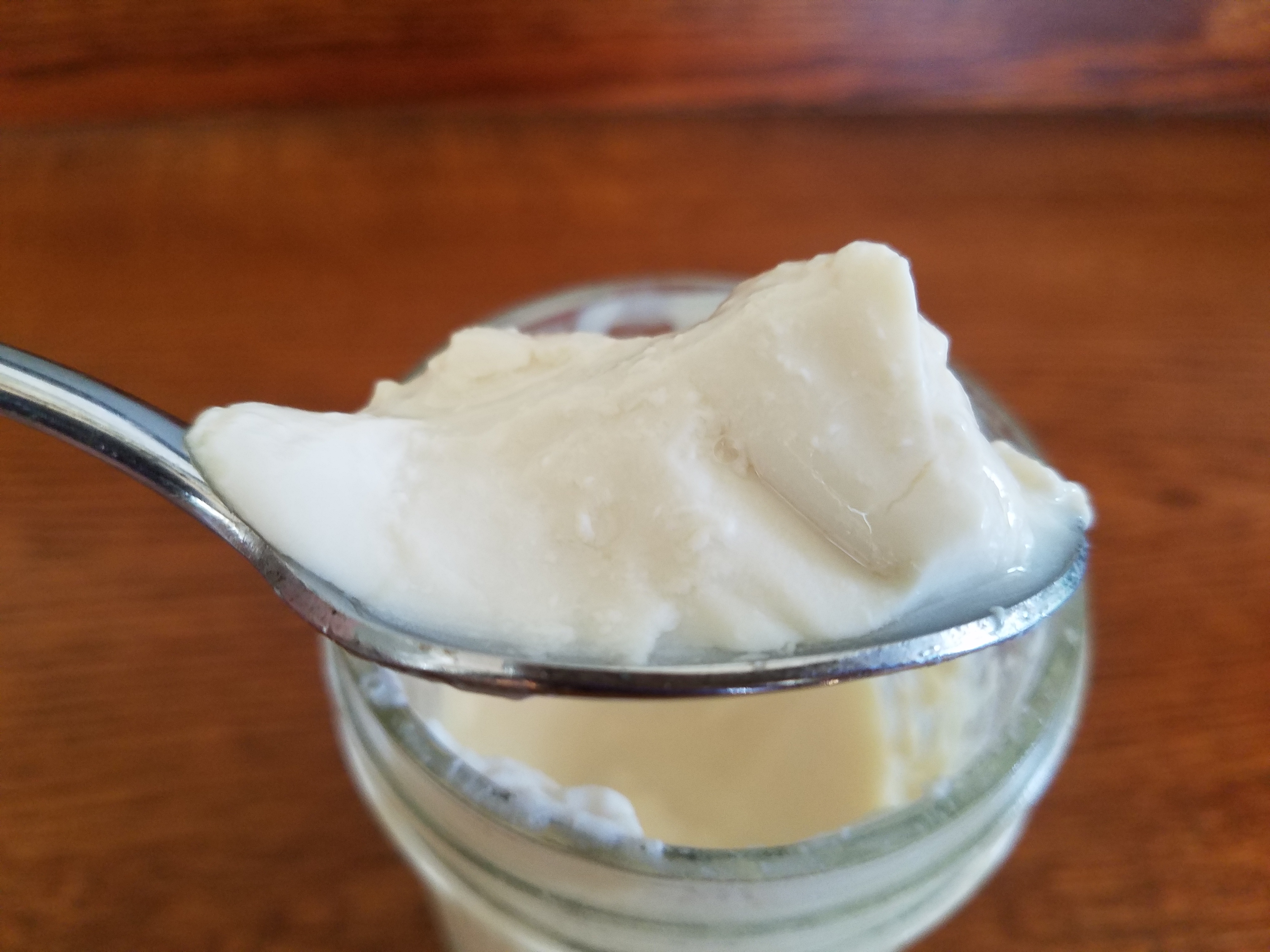
Now, if you follow these instructions and try it, it might not work perfectly the first time or every single time. Pro-biotics are living beings and like all living beings, they sometimes do things we don’t want them to do.
Here are a few tips:
If you wake up in the morning and the yogurt is still the same consistency of milk, there are only three possibilities of what happened: the bacteria didn’t stay warm enough long enough, they got too hot and died (or were dead to begin with), or there weren’t enough of them happy and active.
I have found that if I start a new batch from scratch without adding a spoonful of already made yogurt, that it doesn’t always set.
To fix this, you can simply pour the mixture back in the saucepan, carefully bring it back up to 110 degrees (no warmer) and add another dose of 50 billion cultures. Pour back into the jars and snuggle them next to the jar of boiling water and let them be for another 4 hours.
Sometimes at the two-hour point, I take a peek and warm up the water again. I don’t know if this really makes a difference, but it’s a little insurance that everyone’s staying nice and toasty.
Keep your jar of pro-biotics in the fridge to help keep them fresh.
My favorite way to use yogurt is in overnight oats. It adds a nice tang and thickens up the oatmeal perfectly.
I also use it to make frozen yogurt, add it to smoothies, or mix it up with fresh fruit, cinnamon, and a drizzle of maple syrup.
If you try this, let me know what you think!
Protein Rich Soy Yogurt
Ingredients
- 3/4 cup powdered soy milk
- 4 cups water
- 1 probiotic capsule containing at least 50 billion active cultures try 100 billion for the first batch that include Lactobacillus acidophilus, Bifidobacterium bifidum, Lactobacillus plantarum, Lactobacillus salivarious, Lactobacillus casei, Lactobacillus paracasei, Lactobacillus rhamnosus or more.
Instructions
- Mix water and soy powder in a saucepan that holds at least 8 cups. (If you are not careful, this mixture can boil over so you want to use a larger pot than might seem necessary.)
- Bring to just boiling and whisk.
- Allow milk to cool to 110 degrees F (takes 20-30 minutes depending on the temperature of your kitchen)
- Whisk in pro-biotics and/or a tablespoon of already-made yogurt.
- Pour into five small mason jars and close lids.
- Place jars in a small cooler along with a mason jar of boiling water.
- Close cooler and check yogurt after 3-4 hours.
- If not set yet, refresh boiling water and check again in a couple hours.
